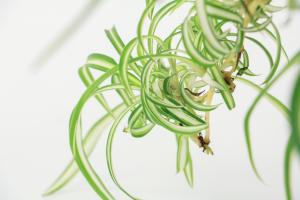When to Plant Lime Trees in Florida
Florida is well-known for its production of citrus fruits, among which lime is one of the most popular varieties. If you're thinking of planting a lime tree in your garden or orchard, timing is an essential factor for its successful growth and fruiting. In this article, we'll discuss the right time to plant lime trees in Florida and the factors that affect their growth and development.
The Best Time to Plant Lime Trees in Florida
The ideal time to plant lime trees in Florida is during the late fall or winter months, preferably from November to February. This is because the cool weather and light rainfall conditions during these months promote healthy root development and encourage the tree to grow vigorously. Fall or winter planting allows the tree to establish its roots well before the onset of hot summer weather, making it more resistant to drought and heat stress.
Factors Affecting Lime Tree Growth in Florida
Several factors can affect the growth of lime trees in Florida, and it's crucial to consider these when planting and maintaining your tree. Here are some of the main factors:
Soil Quality
Lime trees thrive in well-draining soil that's rich in organic matter. The soil should have a pH of between 6.0 and 7.5, and be free from excess salts, which can cause root damage.
Watering
Regular watering is essential for lime trees, especially during their initial growth phase. Young trees require frequent watering to help them establish their roots, while established trees need less frequent but deep irrigation to encourage deep root growth and prevent waterlogging.
Sunlight
Lime trees require at least six hours of direct sunlight daily to grow and fruit optimally. Ensure that your tree is planted in an area that receives plenty of sunlight throughout the day, especially during the winter months when the sun is lower in the sky.
Pest and Disease Management
Lime trees are susceptible to several pests and diseases, including citrus greening, citrus canker, and spider mites. Proper pest and disease management practices, such as regular inspection, use of resistant varieties, and timely treatment, can help prevent and control infestations.
Conclusion
Timing is a crucial factor when it comes to planting lime trees in Florida. Late fall or winter planting provides the ideal conditions for optimal root development and vigorous growth. Factors such as soil quality, watering, sunlight, and pest and disease management also play a significant role in determining the tree's growth and fruiting success. Keep these factors in mind, and you'll be on your way to growing healthy, productive lime trees in your Florida garden or orchard.

 how many times do yo...
how many times do yo... how many planted tre...
how many planted tre... how many pine trees ...
how many pine trees ... how many pecan trees...
how many pecan trees... how many plants comp...
how many plants comp... how many plants can ...
how many plants can ... how many plants and ...
how many plants and ... how many pepper plan...
how many pepper plan...
































